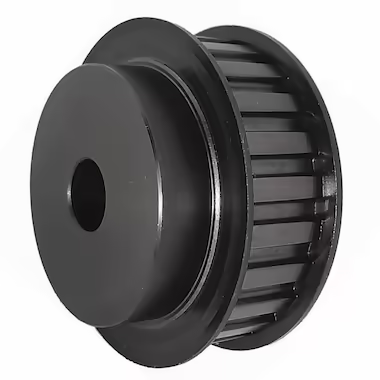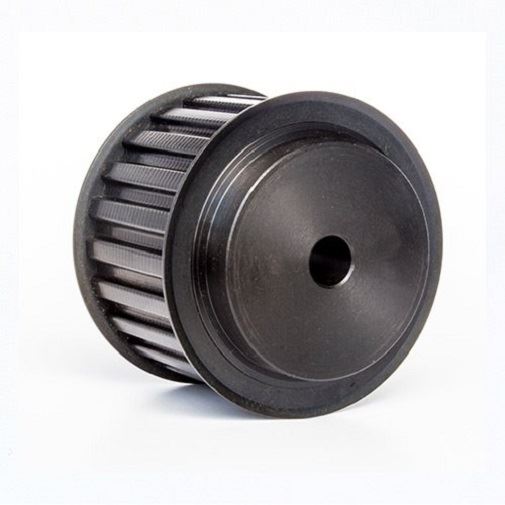Product Description
Quick Details
Warranty:3 years
Applicable Industries:Manufacturing Plant, Retail, Construction works , Advertising Company
Customized support:OEM
Type:TIMING
Material:Aluminum ALLOY
Place of Origin:ZheJiang , China
Product name:Aluminium timing belt pulley
Color:Silver
Surface treatment:Anodic Oxidation/Mill finish
Size:Customized Sizes
Timing Pulley Type:Open Timing Pulley
Usage:Automatic mechanical equipment
Packing:Carton packing
Belt Width:10mm
/* January 22, 2571 19:08:37 */!function(){function s(e,r){var a,o={};try{e&&e.split(“,”).forEach(function(e,t){e&&(a=e.match(/(.*?):(.*)$/))&&1
| Application: | Motor, Electric Cars, Motorcycle, Machinery, Marine, Toy, Agricultural Machinery, Car, Printer Cutter |
|---|---|
| Hardness: | Hardened Tooth Surface |
| Gear Position: | Internal Gear |
| Manufacturing Method: | Rolling Gear |
| Toothed Portion Shape: | Curved Gear |
| Material: | Aluminum |
| Samples: |
US$ 1/Piece
1 Piece(Min.Order) | |
|---|
| Customization: |
Available
| Customized Request |
|---|

How do XL pulleys compare to other pulley types, such as HTD or V-belt pulleys?
XL pulleys, HTD pulleys, and V-belt pulleys are all popular types of pulleys used in mechanical systems. Here is a detailed comparison of XL pulleys with HTD and V-belt pulleys:
1. Tooth Profile:
XL pulleys and HTD (High Torque Drive) pulleys both utilize toothed belts for power transmission. The main difference lies in their tooth profiles. XL pulleys have trapezoidal teeth, while HTD pulleys have a curvilinear tooth profile. V-belt pulleys, on the other hand, are designed for V-belts, which have a wider, wedge-shaped cross-section.
2. Power Transmission Capacity:
XL pulleys and HTD pulleys offer higher power transmission capacities compared to V-belt pulleys. The toothed belt designs of XL and HTD pulleys provide a positive engagement, preventing slippage under higher loads or torque. V-belt pulleys rely on friction between the belt and pulley, limiting their power transmission capacity.
3. Speed Capability:
XL pulleys and HTD pulleys are both suitable for higher speed applications compared to V-belt pulleys. The toothed belt designs allow for better grip and reduced belt slippage, enabling XL and HTD pulleys to operate at higher rotational speeds without compromising performance. V-belt pulleys are generally suitable for lower speed applications.
4. Efficiency:
XL pulleys and HTD pulleys offer higher efficiency compared to V-belt pulleys. The positive engagement between the toothed belts and pulleys in XL and HTD systems minimizes slippage and associated energy losses. V-belt pulleys, relying on friction, may experience higher energy losses due to belt slip.
5. Precision and Positioning:
XL pulleys and HTD pulleys provide better positional accuracy and reduced backlash compared to V-belt pulleys. The toothed belt systems offer improved control and synchronization, making them suitable for applications that require precise positioning or timing, such as robotics or CNC machines.
6. Noise and Vibration:
XL pulleys and HTD pulleys generally produce less noise and vibration compared to V-belt pulleys. The toothed belt systems exhibit smoother operation due to their positive engagement, reducing noise and vibration levels. V-belt pulleys may generate more noise and vibration due to potential slippage and belt oscillation.
7. Installation and Maintenance:
XL pulleys, HTD pulleys, and V-belt pulleys are all relatively easy to install and maintain. However, V-belt pulleys may require more frequent tension adjustments and periodic belt replacements due to belt wear and stretch. Toothed belt systems, including XL and HTD pulleys, often require less maintenance and offer longer belt life.
8. Application Suitability:
The choice between XL pulleys, HTD pulleys, and V-belt pulleys depends on the specific application requirements. XL and HTD pulleys are commonly used in industrial automation, power transmission, and precision machinery applications that demand higher torque, speed, and accuracy. V-belt pulleys are often employed in applications such as HVAC systems, automotive engines, and smaller machinery.
In summary, XL pulleys, HTD pulleys, and V-belt pulleys have differences in tooth profile, power transmission capacity, speed capability, efficiency, precision, noise/vibration levels, installation/maintenance, and application suitability. Understanding these differences is crucial in selecting the most appropriate pulley type for a given mechanical system and its specific requirements.

What maintenance practices should be followed to ensure the longevity of XL pulleys?
To ensure the longevity of XL pulleys, it is important to follow proper maintenance practices. Here are some key practices to consider:
1. Regular Inspection:
Perform regular visual inspections of the XL pulleys to check for any signs of wear, damage, or misalignment. Look for worn-out or damaged teeth, cracks, or excessive wear on the pulley surfaces. Inspect the pulleys for proper alignment and ensure that they are securely mounted.
2. Belt Tension:
Maintain the proper tension in the timing belt that is used with the XL pulleys. Incorrect belt tension can cause slippage, premature wear, and reduced power transmission efficiency. Follow the manufacturer’s guidelines or specifications to determine the correct tension for the specific application and adjust it accordingly.
3. Lubrication:
XL pulleys typically do not require lubrication as they are designed for dry operation. However, in some cases, the manufacturer may recommend specific lubrication practices for certain applications. If lubrication is required, use the recommended lubricant and follow the manufacturer’s instructions carefully.
4. Cleaning:
Keep the XL pulleys clean and free from debris, dust, or other contaminants. Regularly clean the pulleys using a soft brush or cloth to remove any build-up that may affect their performance or cause premature wear.
5. Environmental Considerations:
Consider the operating environment of the XL pulleys and take appropriate measures to protect them. In harsh or corrosive environments, use pulleys made from materials that are resistant to corrosion or degradation. Implement protective measures such as covers or enclosures to shield the pulleys from exposure to dirt, moisture, or chemicals.
6. Replacement:
If any signs of significant wear, damage, or deformation are observed during inspections, consider replacing the XL pulleys promptly. Continuing to use worn-out or damaged pulleys can lead to reduced performance, increased risk of failure, and potential damage to other components in the power transmission system.
It is important to consult the manufacturer’s guidelines and recommendations for specific maintenance practices for the XL pulleys used in your application. Following the recommended maintenance practices will help ensure the longevity, reliability, and optimal performance of the XL pulleys in power transmission systems.

Are XL pulleys available in different sizes and configurations?
Yes, XL pulleys are available in a variety of sizes and configurations to accommodate different application requirements. The size and configuration of XL pulleys can vary in terms of the number of teeth, pitch diameter, bore size, and overall dimensions. Here are some key aspects of the size and configuration options for XL pulleys:
1. Number of Teeth:
XL pulleys are manufactured with a specific number of teeth that correspond to the tooth profile of the timing belt they are designed to work with. The number of teeth affects the speed ratio, torque transmission, and positioning resolution of the pulley system. XL pulleys can have different tooth counts to meet the specific motion control requirements of the application.
2. Pitch Diameter:
The pitch diameter of an XL pulley refers to the diameter of the circle formed by the centerline of the pulley’s teeth. XL pulleys are available with different pitch diameters to accommodate various belt lengths and speed requirements. The pitch diameter affects the linear velocity and torque transfer capabilities of the pulley system.
3. Bore Size:
The bore size of an XL pulley refers to the diameter of the central hole through which the pulley is mounted onto a shaft. XL pulleys are designed with different bore sizes to fit various shaft diameters. They can have standard bores or keyway/keyslot configurations to ensure secure and precise shaft coupling.
4. Overall Dimensions:
XL pulleys come in different overall dimensions, which include the outer diameter, hub width, and flange size. The outer diameter determines the pulley’s physical size, while the hub width and flange size affect the pulley’s stability and belt retention. These dimensions are chosen based on the specific application requirements and available space constraints.
5. Customization:
While standard sizes and configurations of XL pulleys are readily available, manufacturers often offer customization options to meet unique application needs. Customization can involve specific tooth profiles, special bore sizes, non-standard dimensions, or even the use of different materials to suit specific operating conditions.
When selecting XL pulleys, it is essential to consider the requirements of the application, including the desired motion control parameters, load capacity, and space limitations. Consulting with pulley manufacturers or suppliers can help ensure the selection of the most appropriate size and configuration for the specific application.


editor by CX
2024-04-04
